Dacia Sandero vs Peugeot 208 – Kumpi auto sopii sinulle paremmin?
Olipa kyse arjesta, perheestä tai pitkistä matkoista – tässä näkyvät erot.
Selvitä, sopiiko Dacia Sandero vai Peugeot 208 paremmin elämäntyyliisi.
Compact Contenders: Dacia Sandero vs Peugeot 208
In the bustling arena of hatchbacks, the Dacia Sandero and the Peugeot 208 stand out as prominent competitors. Both vehicles offer a mix of modern engineering, efficiency, and practicality tailored for urban living. In this comparison, we will delve into the nuances that separate these two and help potential buyers make an informed choice.
Powertrain and Performance
The Dacia Sandero offers a range of petrol and LPG engines with outputs ranging from 67 HP to 110 HP. It features both manual and CVT transmissions, with the most potent configuration accelerating from 0 to 100 km/h in a respectable 10 seconds. The Sandero operates with a three-cylinder engine, designed for efficiency with a fuel consumption range starting from 5.2 L/100km. The maximum speed varies between 158 km/h and 183 km/h across different engine trims.
In contrast, the Peugeot 208 provides a mix of petrol, mild-hybrid, and even fully electric powertrains. It delivers higher performance with power outputs from 101 HP up to 156 HP. The most powerful petrol variant achieves 0 to 100 km/h in just 8.3 seconds. Additionally, the electric edition of the 208 promotes an impressive efficiency, using merely 14.5 kWh/100 km and can cover distances up to 410 km on a single charge.
Design and Dimensions
When considering size, the Sandero is a tad longer, measuring around 4099 mm, while the 208 is more compact at 4055 mm. The Sandero features a wider stance at 1848 mm, providing a roomier interior ambiance, while the 208 appeals with its sleek, aerodynamic design tailored for urban sophistication at a width of 1745 mm.
Both vehicles share the practicality of being five-door hatchbacks, allowing easy access to the cabin for all passengers, with seating capacity for five. The trunk capacity is another key difference; Sandero offers more cargo space with its 328-liter trunk, compared to the Peugeot 208's range between 265 to 309 liters depending on the variant.
Tech and Innovation
The Dacia Sandero boasts essential tech features with a focus on maintaining an attractive price point. It is equipped with a straightforward infotainment system and essential driver aids to make day-to-day driving manageable and convenient.
Peugeot, on the other hand, endows the 208 with more high-end technology. The i-Cockpit digital interface offers a futuristic and connected driving experience, featuring a 3D instrument cluster alongside advanced connectivity options. The electric 208 further includes innovative regenerative braking technology helping to maximize range efficiency.
Eco-Friendliness
In terms of emissions, the Sandero provides options across emission classes C to E, striving for environmentally conscious operations without compromising on performance. The 208, notably with its electric version, achieves class-leading status with a net-zero CO2 emission profile, highlighting Peugeot's commitment to sustainability.
Conclusion
Choosing between the Dacia Sandero and the Peugeot 208 largely depends on one's priorities and budget. The Dacia Sandero serves as an affordable yet competent option for those looking for dependable performance and practicality. Meanwhile, the Peugeot 208 addresses the needs of a tech-savvy and eco-conscious clientele, offering cutting-edge innovations and the choice of an electric model. Both vehicles exhibit the excellence of modern hatchbacks, combining efficiency, style, and utility that cater to urban mobility with distinct approaches.
Tässä mennään yksityiskohtiin: tekniset erot tarkemmin
Kustannukset ja kulutus: Hinnan ja tehokkuuden vertailussa erot tulevat usein selvimmin esiin. Tässä ratkaistaan, kumpi malli sopii paremmin budjettiisi pitkällä aikavälillä.
Dacia Sandero on hinnassa merkittävä edullisempi – sen lähtöhinta on 12500 €, kun taas Peugeot 208 maksaa 24100 €. Ero on noin 11640 €.
Polttoaineenkulutuksessa näkyy ero: Peugeot 208 kuluttaa 4.50 L ja on siten pienessä määrin taloudellisempi kuin Dacia Sandero, jonka kulutus on 5.30 L. Ero on noin 0.80 L /100 km.
Moottori ja suorituskyky: Teho, vääntömomentti ja kiihtyvyys kertovat paljon auton ajotuntumasta. Tässä näkyy, kumpi tarjoaa enemmän ajamisen iloa.
Moottoritehossa Peugeot 208 on ilmeinen etulyöntiasemassa – 156 hv verrattuna 110 hv:een. Ero on noin 46 hv hv.
Kiihdytyksessä 0–100 km/h Peugeot 208 on ilmeinen nopeampi – 8.30 s vs. 10 s. Ero on noin 1.70 s sekuntia.
Huippunopeudessa Peugeot 208 on vähäinen edellä – se yltää 200 km/h:een, kun taas Dacia Sandero saavuttaa 183 km/h. Ero on noin 17 km/h.
Vääntömomentissa näkyy myös ero: Peugeot 208 vetää erottuva voimakkaammin, 270 Nm verrattuna 200 Nm:een. Eroa on noin 70 Nm.
Tila ja käytännöllisyys: Sisätilat, tavaratila ja kantavuus ratkaisevat auton arjen käytettävyyden. Mukavuus ja joustavuus ovat avainasemassa.
Molemmissa autoissa on tilaa 5 henkilölle.
Omapainossa Dacia Sandero on melkein huomaamaton kevyempi – 1089 kg verrattuna 1165 kg:een. Painoero on noin 76 kg.
Tavaratilan koossa Peugeot 208 tarjoaa kevyt enemmän – 352 L verrattuna 328 L:een. Ero on noin 24 L.
Maksimikantavuudessa Peugeot 208 pärjää vähäinen paremmin – jopa 1163 L, noin 55 L enemmän kuin Dacia Sandero.
Kantavuudessa Dacia Sandero on melkein huomaamaton parempi – 436 kg verrattuna 430 kg:een. Ero on noin 6 kg.
Yhteenvetomme: Peugeot 208 osoittautuu olevan voittaa selvästi ja saa siksi tittelin DriveDuel Champion!
Tässä vertailussa Peugeot 208 on monipuolisempi kokonaisuus.
Dacia Sandero
Dacia Sandero on erinomainen valinta niille, jotka kaipaavat edullista ja tilavaa autoa. Sen moderni muotoilu ja käytännölliset ominaisuudet tekevät siitä houkuttelevan vaihtoehdon kaupungissa liikkuville. Sandero yhdistää tyylin ja käytännöllisyyden, tarjoten mukavuutta päivittäiseen ajoon.
Tiedot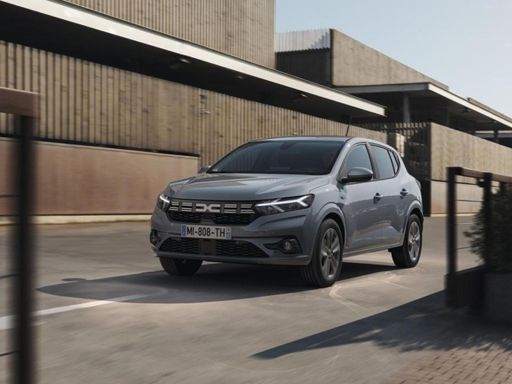 @ dacia.at
@ dacia.at
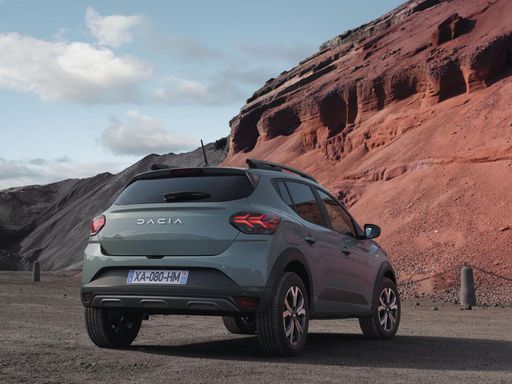 @ dacia.at
@ dacia.at
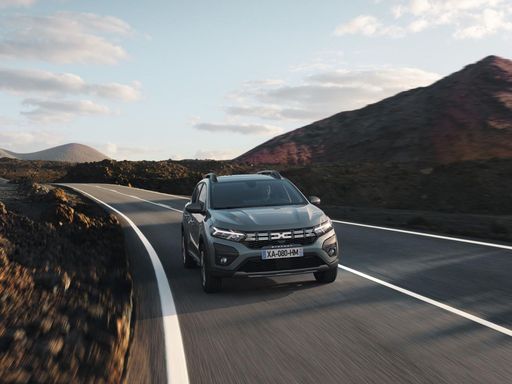 @ dacia.at
@ dacia.at
Peugeot 208
Peugeot 208 on saanut laajaa huomiota tyylikkään muotoilunsa ja dynaamisen ajettavuutensa ansiosta. Tämä kompakti auto yhdistää mukavuuden ja energisyyden, mikä tekee siitä erinomaisen valinnan kaupunkiajoon. Lisäksi sen sisätilat ovat hyvin suunnitellut ja tarjoavat modernin tuntuman, joka miellyttää niin kuljettajaa kuin matkustajiakin.
Tiedot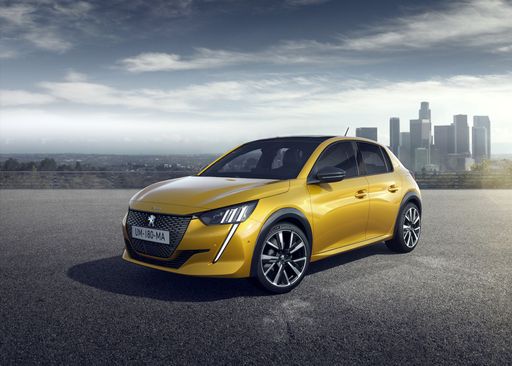 @ www.media.stellantis.com
@ www.media.stellantis.com
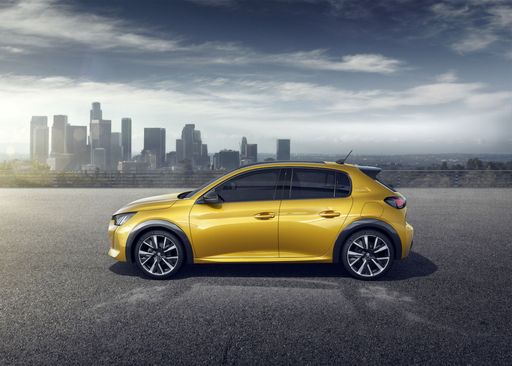 @ www.media.stellantis.com
@ www.media.stellantis.com
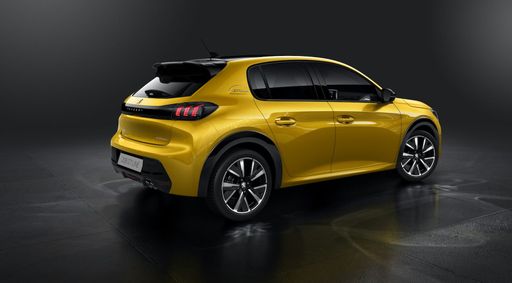 @ www.media.stellantis.com
@ www.media.stellantis.com
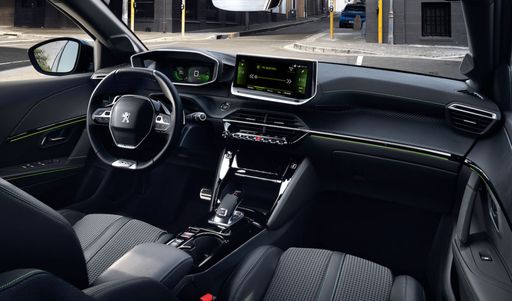 @ www.media.stellantis.com
@ www.media.stellantis.com

|

|
|
|
|
Kustannukset ja kulutus |
|
|---|---|
|
Hinta
12500 - 19500 €
|
Hinta
24100 - 41000 €
|
|
Kulutus L/100km
5.3 - 7.1 L
|
Kulutus L/100km
4.5 - 5.2 L
|
|
Kulutus kWh/100km
-
|
Kulutus kWh/100km
14.1 - 15.4 kWh
|
|
Sähköinen toimintasäde
-
|
Sähköinen toimintasäde
362 - 432 km
|
|
Akun kapasiteetti
-
|
Akun kapasiteetti
46 - 51 kWh
|
|
CO2
105 - 140 g/km
|
CO2
0 - 117 g/km
|
|
Polttoainesäiliön tilavuus
32 - 50 L
|
Polttoainesäiliön tilavuus
44 L
|
Mitat ja kori |
|
|---|---|
|
Kori
Hatchback
|
Kori
Hatchback
|
|
Istuimet
5
|
Istuimet
5
|
|
Ovet
5
|
Ovet
5
|
|
Omamassa
1089 - 1209 kg
|
Omamassa
1165 - 1530 kg
|
|
Tavaratila
328 L
|
Tavaratila
309 - 352 L
|
|
Pituus
4088 - 4099 mm
|
Pituus
4055 mm
|
|
Leveys
1848 mm
|
Leveys
1745 mm
|
|
Korkeus
1499 - 1535 mm
|
Korkeus
1430 mm
|
|
Maksimi tavaratila
1108 L
|
Maksimi tavaratila
1118 - 1163 L
|
|
Kantavuus
404 - 436 kg
|
Kantavuus
380 - 430 kg
|
Moottori ja suorituskyky |
|
|---|---|
|
Moottorityyppi
Bensiini, Kaasu (LPG)
|
Moottorityyppi
Bensiini, Sähkö, Bensiini MHEV
|
|
Vaihteisto
Manuel, Automaatti
|
Vaihteisto
Manuel, Automaatti
|
|
Vaihteiston tyyppi
Manuaalivaihteisto, CVT-vaihteisto
|
Vaihteiston tyyppi
Manuaalivaihteisto, Alennusvaihteisto, Kaksoiskytkin automaatti
|
|
Vetotapa
Etuveto
|
Vetotapa
Etuveto
|
|
Teho hv
67 - 110 hv
|
Teho hv
101 - 156 hv
|
|
Kiihtyvyys 0-100 km/h
10 - 16.7 s
|
Kiihtyvyys 0-100 km/h
8.3 - 10.9 s
|
|
Huippunopeus
158 - 183 km/h
|
Huippunopeus
150 - 200 km/h
|
|
Vääntömomentti
95 - 200 Nm
|
Vääntömomentti
205 - 270 Nm
|
|
Sylinterien lukumäärä
3
|
Sylinterien lukumäärä
3
|
|
Teho kW
49 - 81 kW
|
Teho kW
74 - 115 kW
|
|
Iskutilavuus
999 cm3
|
Iskutilavuus
1199 cm3
|
Yleiset |
|
|---|---|
|
Mallivuosi
2024 - 2025
|
Mallivuosi
2023 - 2025
|
|
CO2-tehokkuusluokka
D, C, E
|
CO2-tehokkuusluokka
D, A, C
|
|
Merkki
Dacia
|
Merkki
Peugeot
|
Millaisia voimalinjoja Dacia Sandero:ssa on saatavilla?
Dacia Sandero on saatavilla Etuveto-vetotavalla.
Näytetyt hinnat ja tiedot ovat arvioita, jotka perustuvat Saksan listahintoihin, ja voivat vaihdella maittain. Nämä tiedot eivät ole oikeudellisesti sitovia.
